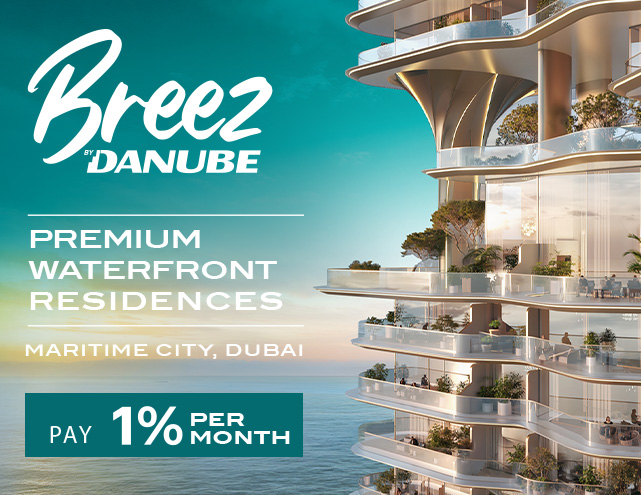Dubai’s property market continues to attract global investors searching for the best areas in Dubai for capital appreciation by 2030. With rapid urban development, increasing demand, and visionary infrastructure projects, select neighbourhoods are positioned for robust long-term growth. In this article, we explore the key factors driving capital appreciation, highlight areas with the highest potential, and explain how strategic investment can translate into tangible returns for property buyers.
What is Capital Appreciation, and Why Does it Matter for Real Estate Investors?
Capital appreciation refers to the increase in the market value of a property over time. For real estate investors in Dubai, capital appreciation is a crucial metric, often representing the bulk of long-term returns. Unlike rental yield, which provides regular income, capital appreciation rewards investors when they sell the property at a higher price than they paid for it.
According to the Dubai Land Department, Dubai’s real estate market is uniquely attractive for capital appreciation due to its rapid urban development, investor-friendly regulations, and the government’s commitment to high-quality infrastructure. Maximizing capital appreciation is particularly important for investors looking to grow wealth, diversify their portfolios, or plan for financial security by 2030 (Global Property Guide).
Understanding the Drivers: Factors Influencing Capital Appreciation in Real Estate
Several local factors drive capital appreciation in Dubai’s property sector. Location remains paramount. Areas close to business hubs, waterfronts, and future infrastructure projects typically see higher demand and rising values. Developments such as the Downtown extension, DIFC 2.0, Business Bay, and Jumeirah are frequently cited by market analysts for their strong prospects over the next decade.
Another key driver is supply and demand dynamics. Projects that successfully balance quality construction with limited supply often experience price increases. According to industry commentary, “If developers can rightfully match demand with the supply, then there is no reason why we can’t see prices rising at a slow but stable rate in the coming years. In 10 years, if we can get a CAGR of 3-4 per cent, we would be happy.”
Public transportation improvements, especially metro line expansions, public parks, and proximity to world-class malls, further enhance neighbourhood appeal—making them top choices for investors aiming for capital appreciation by 2030. Government policies, including visa reforms and foreign ownership rights, also support sustained demand from regional and international buyers. As highlighted by Bloomberg, Dubai property prices have increased 70% over the past four years, underscoring the effect of government policies and ongoing infrastructure investments (Sunrise Developers).
Highlighted Areas for Capital Appreciation by 2030
Investors targeting capital appreciation should pay particular attention to:
- Downtown Dubai Extension: Continued growth and iconic projects reinforce Downtown’s position as a premier investment target.
- DIFC 2.0: The new phase of Dubai International Financial Centre, focusing on fintech and innovation, is expected to attract global corporates and skilled professionals.
- Business Bay: A dynamic mixed-use community, benefiting from business, leisure, and residential synergies.
- Jumeirah: This established area continues to evolve, offering beachfront living and luxury developments.
Analysts project a compound annual growth rate (CAGR) of 3–4% in these neighbourhoods over the next decade, assuming supply aligns with demand and new projects maintain high standards.
Capital Appreciation vs. Rental Yield: Maximizing Your Real Estate Returns
While capital appreciation delivers wealth growth at the point of sale, rental yield provides ongoing income from tenants. Savvy investors often seek a balance, opting for properties that not only rise in value but also generate strong rental returns. According to Global Property Guide, robust rental yields remain a major draw, with average annual rent in Dubai reaching AED 84,835 (USD 23,100) for a 2-bedroom apartment in Q1 2025, appealing especially to cash flow-driven investors (Global Property Guide).
Investors should consider their time horizon and risk appetite when prioritizing between these two metrics. For those focused on capital appreciation by 2030, areas with large-scale government investment, strong employment growth, and iconic new developments are generally the most promising.
Conclusion
To answer the question, “What are the best areas in Dubai for capital appreciation by 2030?”, focus on neighbourhoods like Downtown Dubai Extension, DIFC 2.0, Business Bay, and Jumeirah—with supporting infrastructure, demand, and innovation driving their growth potential. Vigilant investors who align with these market trends can position themselves for long-term gains. Contact Danube Properties to learn more about investment opportunities in Dubai’s fastest-growing districts.
Key takeaway: Downtown Dubai Extension, DIFC 2.0, Business Bay, and Jumeirah are prime areas for capital appreciation in Dubai by 2030, driven by infrastructure investment and demand.




